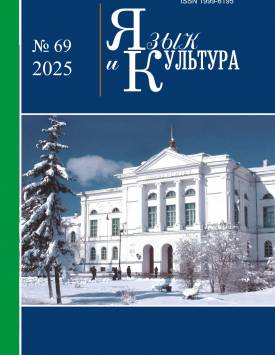The model of teaching a foreign language by means of the development of emotional intelligence
This article presents the main stages and results of a study devoted to the development of students’ emotional intelligence in the process of learning a foreign language. Nowadays the number of studies connected with the development of emotional intelligence has increased. In the methodology of teaching foreign languages there were conducted a few researches about emotions and their role in teaching and learning some language, but they do not fully reveal all the advantages of developing students' emotional intelligence. At the same time, a foreign language has a great didactic potential and can be used for emotional development. As part of this study, the authors created a model for teaching a foreign language, which includes a system of exercises for the development of emotional intelligence. The model contributes to better language acquisition and the formation of the required general professional competencies. The study was conducted at Nizhny Novgorod State Linguistics University named after N.A. Dobrolyubov in three stages. The participants were undergraduate students enrolled in the linguistics program, studying Spanish as a second foreign language for three years. At the first stage of the research, the authors began to work on the model. The practice was organized as follows: students in their first and second year of studying Spanish completed some exercises related to the topic of “Emotions” and did several activities based on the art therapy method, which were adapted for use in a foreign language lesson. Additionally, students’ basic knowledge of emotional intelligence was assessed, and after the experimental trainings, students completed a questionnaire in order to identify the most effective tasks. At the second stage, the study was conducted in a new group of students studying Spanish for two years. The model was supplemented with linguistic and psychological aspects; the authors tested several tasks for the development of emotional intelligence. Moreover, there was conducted a survey among students which was based on the results of the work. In addition to this, the authors analyzed a few indicators of the level of students’ emotional intelligence before and after the training. At the foreign languages end students presented their final projects in a foreign language which were aimed at developing reflection skills. At the third stage of the research, the study was continued in two groups of fourth-year students. The authors completed their work on the model and developed a system of exercises based on linguistic, psychological, and methodological aspects. They also tested several tasks that could be used to improve students' professional teaching skills. Finally, the results of the experimental training were summarized. In conclusion, it was proved that the proposed model was effective in the learning process. The authors declare no conflicts of interests.
Keywords
emotional intelligence, emotional education, Spanish, teaching foreign languages, emotional speech behaviorAuthors
| Name | Organization | |
| Drozhbina Alexandra I. | Nizhny Novgorod State Linguistics University | aleksdrozhofficial@mail.ru |
| Porshneva Elena R. | Nizhny Novgorod State Linguistics University | elporshneva@gmail.com |
References

The model of teaching a foreign language by means of the development of emotional intelligence | Yazyk i Kultura – Language and Culture. 2025. № 69. DOI: 10.17223/19996195/69/6
